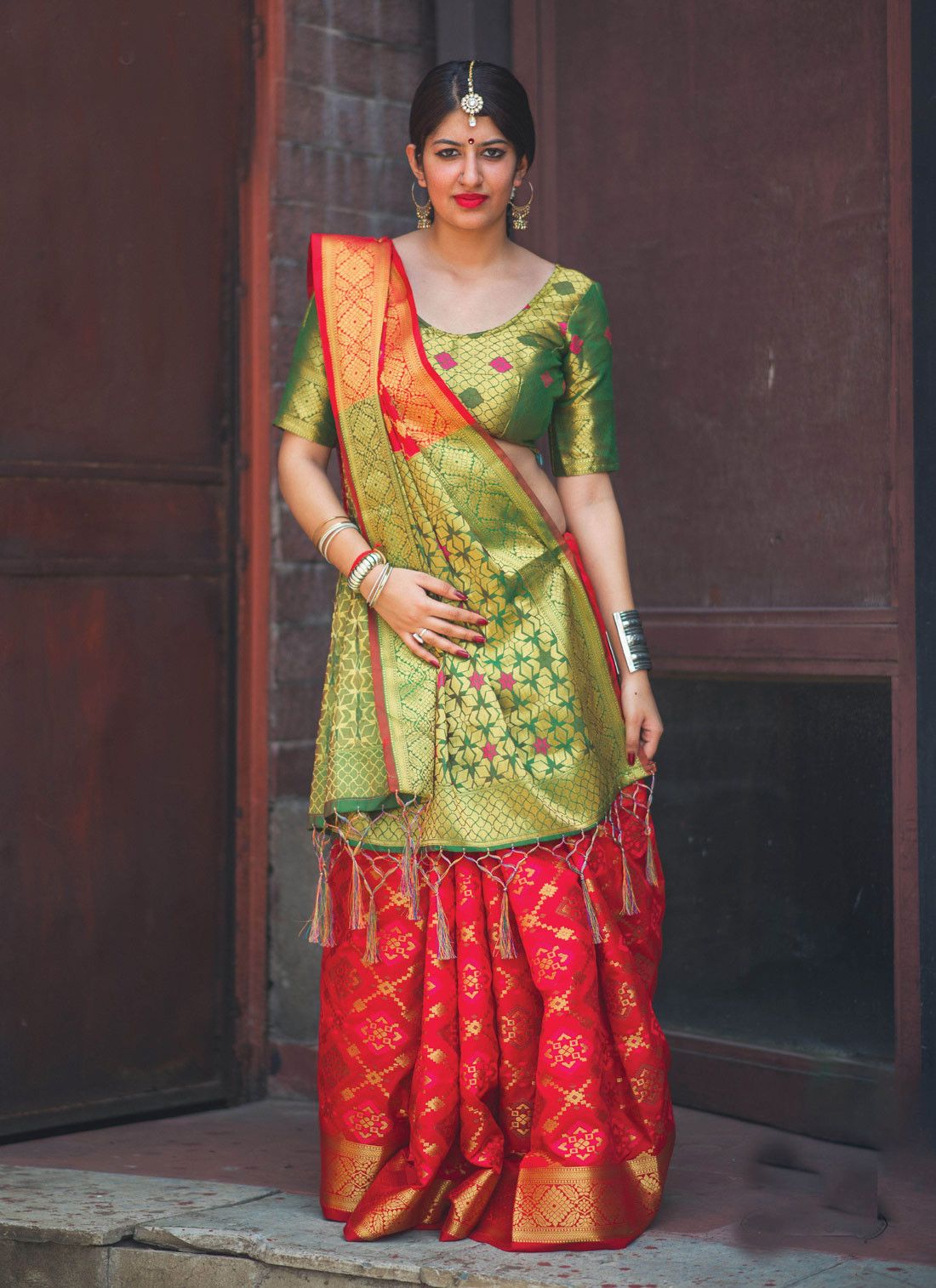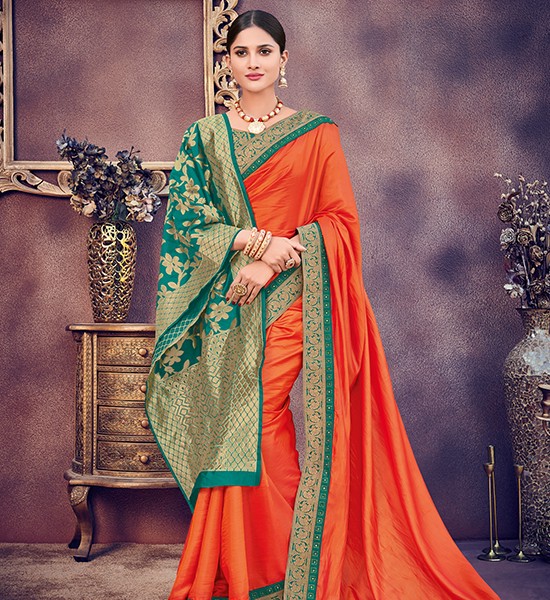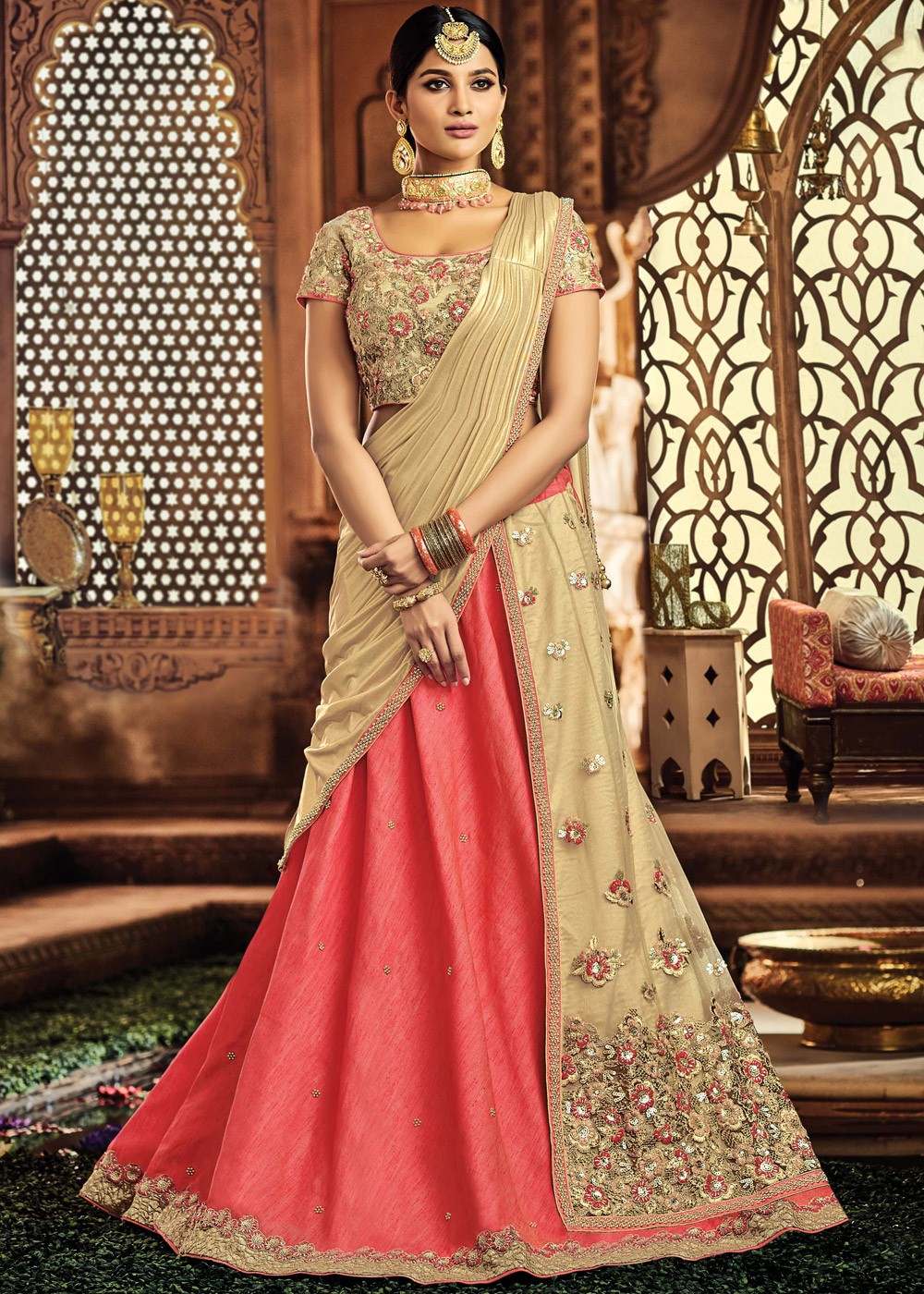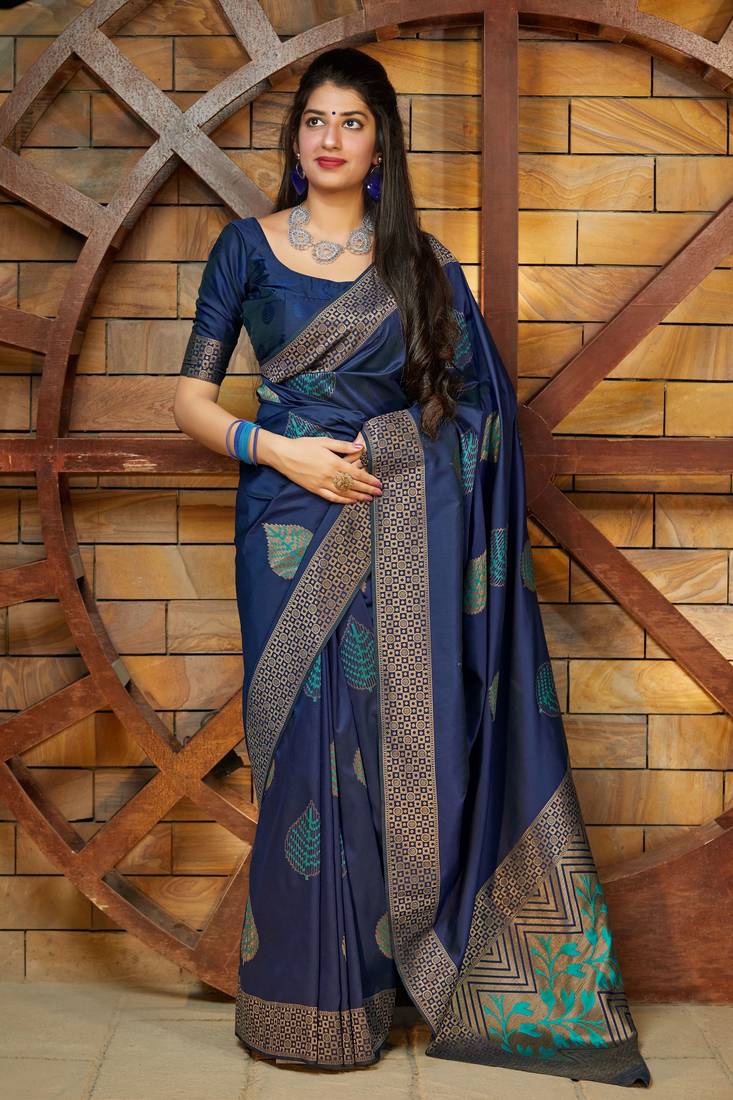Don't we all adore our sarees, those six yards of finery that transform you into a stunning young lady? The way each sari is woven, draped, and pinned to perfection is quite amazing. What's more amazing is that sari draping in India varies from region to region, with each state draping their heirloom pieces in their own unique fashion. That isn't to say you can't play around with your draping skills. A drape can completely transform the appearance of your saree, a brocade saree draped in the traditional pleated back pallu style can look very different when draped in the front pallu style. For your next sari, it's time to move the traditional draping manner and try these draping techniques.
1. Front Pallu Saree Style:
This drape is also known as the Gujarati drape because the pallu is normally on the front side with one end tucked towards the hip. This drape will look great with light and flowing sarees like georgette and chiffon. With this drape design, you can also show off the delicate work on the border of your lovely patola sarees.

2. Double Pallu Saree:
The pallu is usually maintained longer with a key ring connected to one end in this style, and it features two wide pleats. The double wrap effect is achieved by bringing the pallu forward from the back and then flipping it back, creating a circular drape on one side of the shoulder. The keyring gives weight to the pallu and prevents it from falling. The Bengali sari is represented by this draping style. Cotton or handloom sarees are ideal for this drape since they show off the border attractively.

3. Lehenga Saree Draping Styles:
This is a modern twist on the traditional Nivi drape. The sari is draped at the front like a skirt, with fewer pleats. You have the option of selecting the pallu fall. Depending on the work on your sari, it may fall in the back or front. Bollywood actresses popularised this design, making it a fashionable and unique way to drape your sari.

4. Open Pallu Saree Style:
This is one of the most simple drape and pallu styles. The sari is draped around the waist as usual, with the pallu open from one end and no pleats. This gives your sari a trendy, airy look. For chiffon sarees with stone work, this design will perform wonders.

Experiment with all of the drapes listed to improve your sari draping skills!